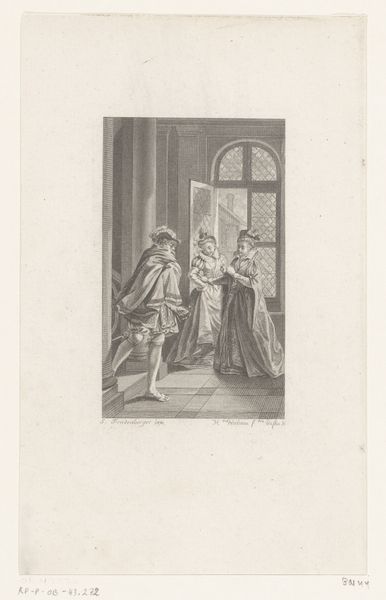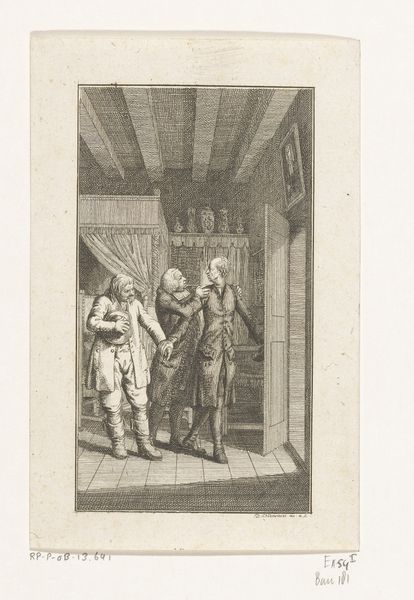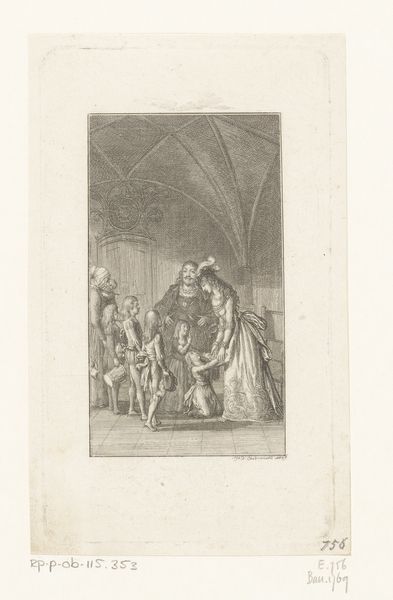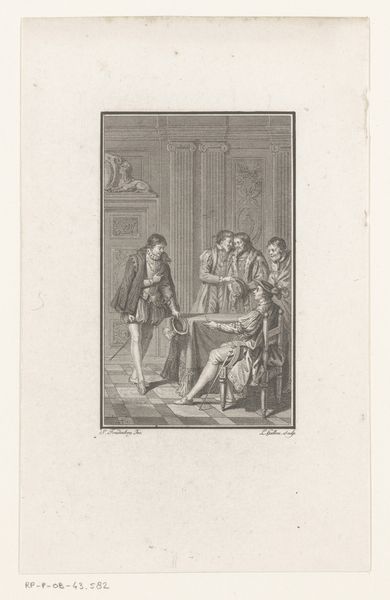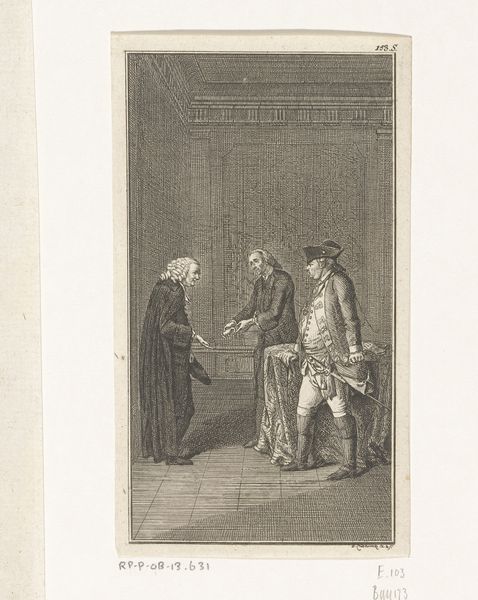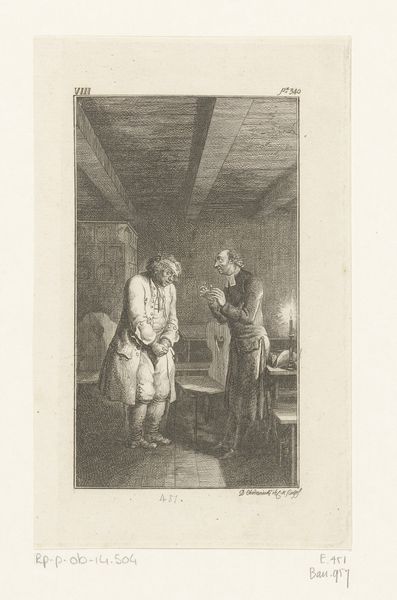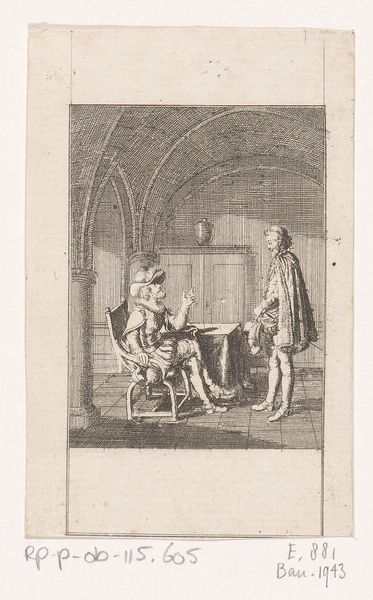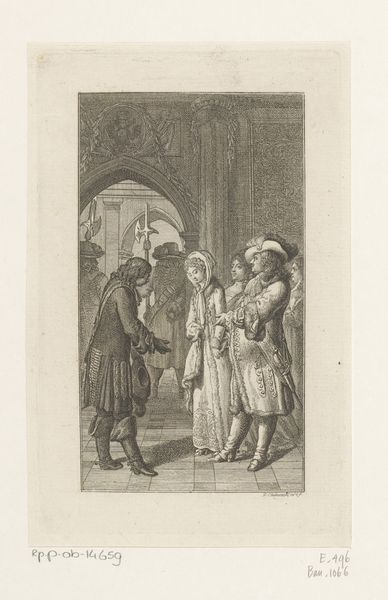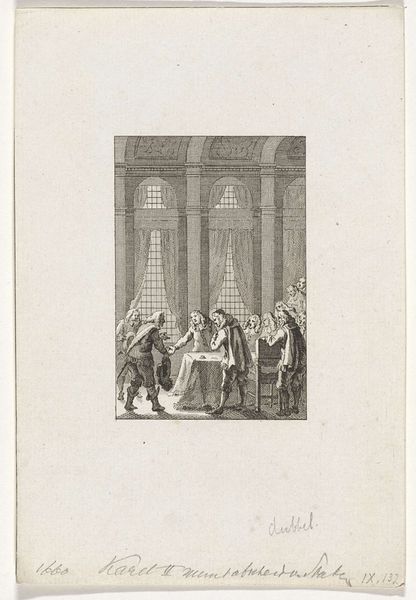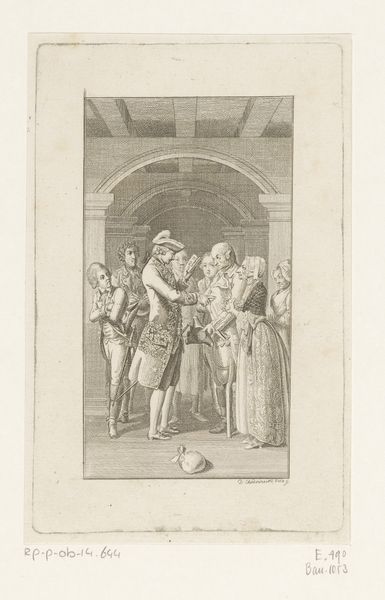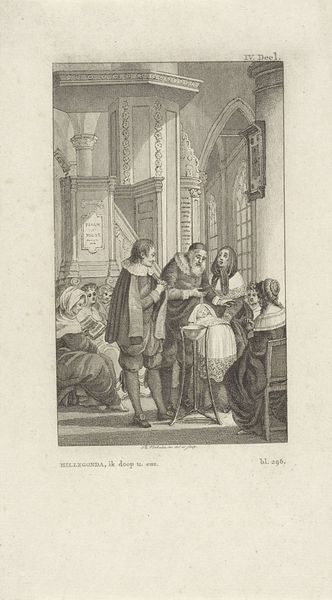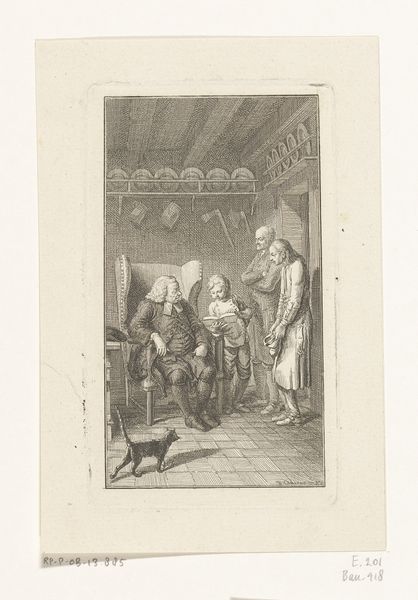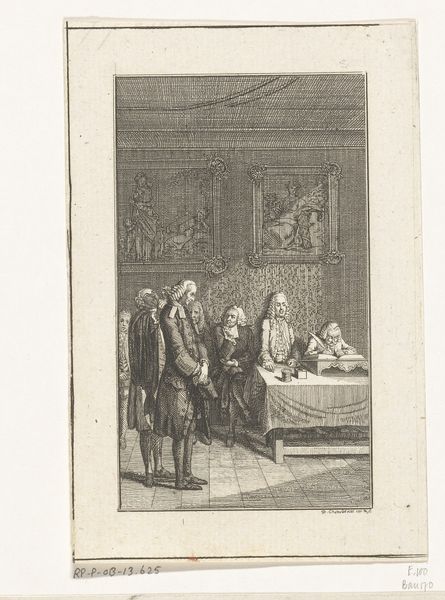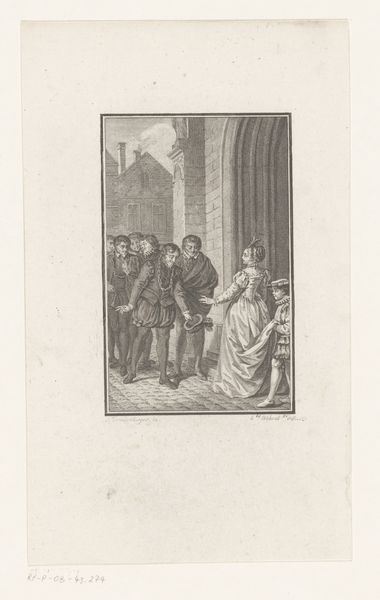
Henrich Stilling tot de orde geroepen door predikant Stollbein 1778
0:00
0:00
Dimensions: height 132 mm, width 75 mm
Copyright: Rijks Museum: Open Domain
Curator: Ah, another compelling piece here at the Rijksmuseum. This is Daniel Nikolaus Chodowiecki’s "Henrich Stilling tot de orde geroepen door predikant Stollbein," created in 1778. It's an engraving. What strikes you initially about this image? Editor: The first thing I notice is the texture. It’s amazing what the engraver achieved, especially given that it’s a black and white print. The density and variation of the lines create so many tonal shifts, like the rough ceiling against the smoother walls. Curator: Indeed, the artist masterfully uses line variation. Note the careful composition – the figure of Henrich Stilling elevated precariously on the chair serves to underscore his discomfiture and vulnerability within the confined space. We must note this work firmly exists in the realm of Romanticism, emphasizing sentiment and moral narrative above pure representational accuracy. Editor: Looking closer at the materiality, the use of copper in the etching process allows for such intricate lines. It's an intriguing insight into printmaking and the tools employed during the period. Think of the sheer number of impressions that could be made with the careful use of those metal plates – an incredible method of disseminating images. And consider how many hands were likely involved in its production and distribution! Curator: I agree; it highlights a growing democratization of art consumption facilitated by printmaking techniques. We can analyze the deeper implications using semiotics. Stollbein’s authoritative stance symbolizes established power rebuking youthful idealism or perhaps artistic hubris, represented by Stilling. Editor: I see the economic context so vividly. Each impression touched so many surfaces, potentially inspiring its viewers while also providing income for the maker, the distributor, the shop owner who displayed it… even the person who supplied the metal. It speaks of a larger production system shaping cultural meaning. Curator: So true, considering that it blends genre-painting with historical events through a lens that emphasizes moral and social lessons, made available for popular consumption. Editor: Exactly! It pulls high art down to earth and celebrates production as both an aesthetic and a social achievement, from Chodowiecki’s design down to the vendor circulating copies throughout the city. The object reveals far more than just aesthetic ideals. Curator: This print invites a richer, more multi-faceted understanding of the interplay between structure, intent, materials, and dissemination. A powerful testament to the complex story behind this print! Editor: Precisely, making one reflect on art as an output of craftsmanship interwoven into the social and economic tapestry. I'll definitely remember to seek out more prints like this when trying to better understand how both visual culture and cultural economies grow together.
Comments
No comments
Be the first to comment and join the conversation on the ultimate creative platform.
